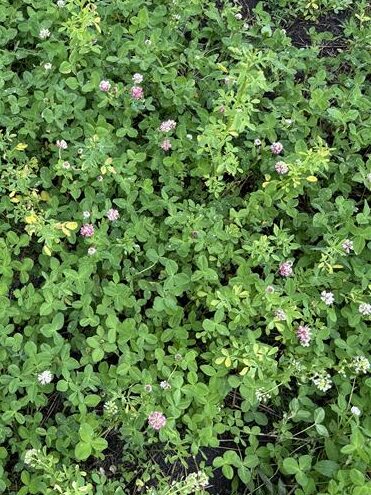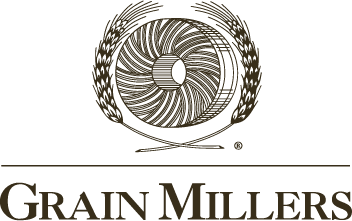A Farmers Experience Planting Cover Crops for the First Time
March 26, 2025
As farmers strive to adapt and innovate to an ever-changing agricultural landscape cover crops often become a focal point of conversation. Cover crops are an increasingly popular avenue for growers looking to build diversity, soil health, and resilience on their farms, although taking the first step towards cover cropping is undoubtedly daunting. Over the past few months, we approached new and seasoned cover crop growers and asked them about their experience planting a cover crop for the first time. Our conversations took us from the plains of Saskatchewan to the heart of the corn belt in Iowa, showcasing the ability of cover crops to work in a wide array of contexts. We pulled out some of the highlights from their stories – check them out below!
What cover crop did you first plant and how did you do it?
- “At that time [when they first began in 2007] after small grains, we would usually seed a clover mix. Consisting of yellow blossom, red clover, and the cheapest alfalfa we could find after oats. After corn harvest, we would do a frost seeding of straight oats before soybeans.” –Iowa Grower

- “We started by flying oats and radishes into corn on Labor Day weekend into standing corn with an airplane. Now I use a cover crop mix that I underseed with my small grains.” -Iowa Grower
- “I planted a very simple mix of tillage radish and purple top turnips. I did a herbicide burn off then planted the cover crop shallow with our air seeder.”-Saskatchewan Grower
Was the cash crop interseeded with the cover crop, or was the cover crop for another purpose?
- “The purpose of cover crops for us was to be grazed for feed.” -Saskatchewan Grower
- “The sole purpose of the cover was to first try it, and two, to improve soil health! I planted it alone after a canola crop from the previous year. Heck! I did not even graze it. I just let the moose eat it. Fast forward to today [11 years cover cropping!] we interseed covers with almost everything!” -Saskatchewan Grower
- “We utilize both methods. The main reason we are not interseeding a cover crop on every acre, particularly in small grains is because it allows us to break up some risk and plant some different mixes post-harvest than we would as an underseeding” -Iowa Grower

What prompted you to make the decision to try a cover crop?
- “We tried cover cropping for the land improvement, ecosystem improvement, increased profitability, better business model for our farm, increased resiliency, and decreased risk. I heard Gabe Brown speak and was mentored by him and others from North Dakota.” –Saskatchewan Grower
- “You know originally the seeding was to make some N for the following crop and create some biomass to hopefully improve soil health.” –Iowa Grower
- “The decision to plant the cover crop was primarily one of wanting to become less reliant on all the inputs that we were buying & increase overall farm profitability.” –Saskatchewan Grower
- “That was simple for the soil health, economic benefits, and a boost in my farms ecosystem.” -Iowa Grower
- “We successfully fall grazed 400 cow/calf pair on barley and oat stubble. We wanted to repeat this in 2024 and thought a cover crop would be a way to add nutritional value along with the potential soil benefits.” -Saskatchewan Grower

What did you learn?
- “We had the best cash crop yield by seeding a cover crop with a cereal crop.” -Saskatchewan Grower
- “Trying to keep a living root out there is more important than a person realizes. Keep a living root out there as much as you can throughout the year!” -Iowa Grower
- “I learned that not everything works. It will not all work in your area and sometimes you might have a “failure.” I had to learn and find other ways to make sure that the covers had their best chance of success in my area and my system.” -Iowa Grower
- “The learning curve started off flat! But you know I saw the cover crop choke out weeds and stay green till the snow came. The following spring the penetrometer went much further into the ground. Fast forward a couple of years and the learning curve looked like a fighter jet leaving an aircraft carrier. There is a lot to learn and manage when you get to a larger scale of trying to intergrade cover crops with cash crops, manage chemical residues, and timing and methods become more impactful.” -Saskatchewan Grower
Here is a small sampling of resources to help you get started on your cover crop journey if you are interested in implementing one this season:
UNITED STATES:
Midwest Cover Crop Council – A collaboration of Midwestern states bringing together information, farmers, and experts from across the region to discuss all topics cover crops. The group has many useful articles and resources that can be found here. Additionally, they have developed a Cover Crop Decision Tool. Check that out here.
Practical Farmers of Iowa – Practical Farmers of Iowa is a farmer led organization focused on supporting farmers success and sustainability not only in Iowa but throughout the Midwest. “Practical Farmers provides farmers and agency personnel with information, anecdotes, and research about adding cover crops to current conventional, organic, or other farming systems.” Their resources can be found here.
NRCS Cover Crops Tool – The NRCS through the USDA has developed a tool focusing both on the costs and benefits of cover crops to farmers. The specific costs and benefits to adding cover crops in a rotation are operationally specific and vary. This tool can provide insight into what that may look like on your operation. Check it out here.
Sustainable Agriculture Research & Education (SARE) – SAREs group provides articles and literature on implementing soil health and productivity practices such as cover crops, which provide protection against soil erosion, water infiltration, nutrient losses, and improvements in soil organic matter. A list of these articles is located here.
CANADA:
Farmers for Climate Solutions – FCSs Farm Resilience Mentorship (FaRM) Program offers free farmer-to-farmer learning resources to support the adoption of resilient practices. The network extends across Canada but has regionally specific groups to share ideas and practices. Check them out here.
Beef Cattle Research Council Canada – Several different helpful resources for mixed operations (and helpful information for grain farms!) with cattle on incorporating cover crops. See their piece on cover crops, or dive further into grazing cover crops.
Cover Crops Canada – The website holds a vast resource section with different types of media you may find useful. Listed on the species page details many different common Canadian annual/perennial cover options to help guide what could work best. They also have multiple videos on their YouTube channel.
Covers & Co – The cover crop seed blend company has many online and in-person learning opportunities for you to discover. Check out their educational library, farm panel discussions, and different blends that they have available that are suited to the Canadian prairies.
